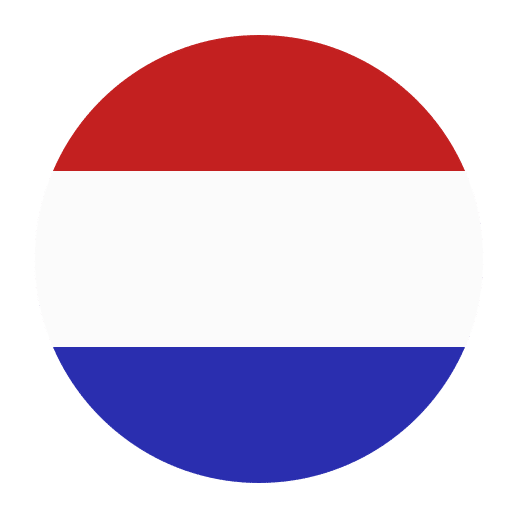Learning a new language is a journey filled with discovery, and understanding its grammar is a pivotal step. Dutch, the language spoken in the Netherlands and parts of Belgium, offers its unique set of rules and patterns, particularly in verb conjugation. This article will delve into common Dutch conjugation patterns, offering a comprehensive guide for English speakers embarking on their Dutch language journey.
The Basics of Dutch Verb Conjugation
Before diving into specific conjugation patterns, it’s essential to grasp the foundational elements of Dutch verbs. In Dutch, verbs are generally categorized into three groups: regular verbs, irregular verbs, and strong verbs. Each category follows distinct conjugation patterns, which can initially seem daunting but become manageable with practice and understanding.
Regular Verbs
Regular verbs in Dutch are the most straightforward to conjugate. They adhere to predictable patterns, making them easier to learn for beginners. These verbs can be divided into two main groups: weak verbs with a stem ending in a consonant and weak verbs with a stem ending in a vowel.
Conjugation of Weak Verbs with a Consonant Stem
Let’s take the verb “werken” (to work) as an example.
– **Present Tense**
– Ik werk (I work)
– Jij werkt (You work)
– Hij/Zij/Het werkt (He/She/It works)
– Wij werken (We work)
– Jullie werken (You all work)
– Zij werken (They work)
– **Simple Past Tense**
– Ik werkte (I worked)
– Jij werkte (You worked)
– Hij/Zij/Het werkte (He/She/It worked)
– Wij werkten (We worked)
– Jullie werkten (You all worked)
– Zij werkten (They worked)
– **Past Participle**
– gewerkt (worked)
Conjugation of Weak Verbs with a Vowel Stem
Consider the verb “spelen” (to play).
– **Present Tense**
– Ik speel (I play)
– Jij speelt (You play)
– Hij/Zij/Het speelt (He/She/It plays)
– Wij spelen (We play)
– Jullie spelen (You all play)
– Zij spelen (They play)
– **Simple Past Tense**
– Ik speelde (I played)
– Jij speelde (You played)
– Hij/Zij/Het speelde (He/She/It played)
– Wij speelden (We played)
– Jullie speelden (You all played)
– Zij speelden (They played)
– **Past Participle**
– gespeeld (played)
Irregular Verbs
Irregular verbs in Dutch don’t follow the standard conjugation patterns of regular verbs. These verbs often have unique forms, especially in the past tense and past participle. Memorization and practice are key to mastering these verbs.
Example: “zijn” (to be)
– **Present Tense**
– Ik ben (I am)
– Jij bent (You are)
– Hij/Zij/Het is (He/She/It is)
– Wij zijn (We are)
– Jullie zijn (You all are)
– Zij zijn (They are)
– **Simple Past Tense**
– Ik was (I was)
– Jij was (You were)
– Hij/Zij/Het was (He/She/It was)
– Wij waren (We were)
– Jullie waren (You all were)
– Zij waren (They were)
– **Past Participle**
– geweest (been)
Example: “hebben” (to have)
– **Present Tense**
– Ik heb (I have)
– Jij hebt (You have)
– Hij/Zij/Het heeft (He/She/It has)
– Wij hebben (We have)
– Jullie hebben (You all have)
– Zij hebben (They have)
– **Simple Past Tense**
– Ik had (I had)
– Jij had (You had)
– Hij/Zij/Het had (He/She/It had)
– Wij hadden (We had)
– Jullie hadden (You all had)
– Zij hadden (They had)
– **Past Participle**
– gehad (had)
Strong Verbs
Strong verbs in Dutch are characterized by a vowel change in the stem when conjugated in the past tense and past participle. These verbs are somewhat akin to irregular verbs but have their distinct pattern involving vowel alternation.
Example: “lopen” (to walk)
– **Present Tense**
– Ik loop (I walk)
– Jij loopt (You walk)
– Hij/Zij/Het loopt (He/She/It walks)
– Wij lopen (We walk)
– Jullie lopen (You all walk)
– Zij lopen (They walk)
– **Simple Past Tense**
– Ik liep (I walked)
– Jij liep (You walked)
– Hij/Zij/Het liep (He/She/It walked)
– Wij liepen (We walked)
– Jullie liepen (You all walked)
– Zij liepen (They walked)
– **Past Participle**
– gelopen (walked)
Example: “eten” (to eat)
– **Present Tense**
– Ik eet (I eat)
– Jij eet (You eat)
– Hij/Zij/Het eet (He/She/It eats)
– Wij eten (We eat)
– Jullie eten (You all eat)
– Zij eten (They eat)
– **Simple Past Tense**
– Ik at (I ate)
– Jij at (You ate)
– Hij/Zij/Het at (He/She/It ate)
– Wij aten (We ate)
– Jullie aten (You all ate)
– Zij aten (They ate)
– **Past Participle**
– gegeten (eaten)
Special Cases in Dutch Conjugation
While regular, irregular, and strong verbs cover most Dutch verbs, some special cases and exceptions are worth noting.
Reflexive Verbs
Reflexive verbs in Dutch require a reflexive pronoun that matches the subject of the sentence. These verbs indicate that the action is performed on the subject itself.
Example: “zich wassen” (to wash oneself)
– **Present Tense**
– Ik was me (I wash myself)
– Jij wast je (You wash yourself)
– Hij/Zij/Het wast zich (He/She/It washes himself/herself/itself)
– Wij wassen ons (We wash ourselves)
– Jullie wassen je (You all wash yourselves)
– Zij wassen zich (They wash themselves)
Modal Verbs
Modal verbs express necessity, possibility, permission, or ability. In Dutch, these verbs often accompany another verb in the infinitive form.
Common Modal Verbs:
– **Kunnen** (can, to be able to)
– Ik kan (I can)
– Jij kan/kunt (You can)
– Hij/Zij/Het kan (He/She/It can)
– Wij kunnen (We can)
– Jullie kunnen (You all can)
– Zij kunnen (They can)
– **Moeten** (must, to have to)
– Ik moet (I must)
– Jij moet (You must)
– Hij/Zij/Het moet (He/She/It must)
– Wij moeten (We must)
– Jullie moeten (You all must)
– Zij moeten (They must)
– **Mogen** (may, to be allowed to)
– Ik mag (I may)
– Jij mag (You may)
– Hij/Zij/Het mag (He/She/It may)
– Wij mogen (We may)
– Jullie mogen (You all may)
– Zij mogen (They may)
– **Willen** (want, to want to)
– Ik wil (I want)
– Jij wilt (You want)
– Hij/Zij/Het wil (He/She/It wants)
– Wij willen (We want)
– Jullie willen (You all want)
– Zij willen (They want)
– **Zullen** (shall, will)
– Ik zal (I shall)
– Jij zult (You shall)
– Hij/Zij/Het zal (He/She/It shall)
– Wij zullen (We shall)
– Jullie zullen (You all shall)
– Zij zullen (They shall)
Separable Verbs
Separable verbs in Dutch consist of a verb and a prefix that can be separated in certain tenses and sentence structures.
Example: “opstaan” (to get up)
– **Present Tense**
– Ik sta op (I get up)
– Jij staat op (You get up)
– Hij/Zij/Het staat op (He/She/It gets up)
– Wij staan op (We get up)
– Jullie staan op (You all get up)
– Zij staan op (They get up)
– **Simple Past Tense**
– Ik stond op (I got up)
– Jij stond op (You got up)
– Hij/Zij/Het stond op (He/She/It got up)
– Wij stonden op (We got up)
– Jullie stonden op (You all got up)
– Zij stonden op (They got up)
– **Past Participle**
– opgestaan (gotten up)
Tips for Mastering Dutch Verb Conjugation
1. **Practice Regularly**: Consistent practice is key to mastering Dutch verb conjugation. Make use of language apps, flashcards, and exercises to reinforce your learning.
2. **Learn Common Verbs First**: Start with the most commonly used verbs in Dutch. This will help you become conversational more quickly and build a solid foundation.
3. **Pay Attention to Context**: Understanding how verbs are used in different contexts will improve your ability to choose the correct conjugation. Practice with real-life scenarios and sentences.
4. **Use Mnemonics**: Create mnemonic devices to remember irregular verb forms. Associating them with familiar words or phrases can make recall easier.
5. **Engage with Native Speakers**: Practicing with native Dutch speakers will provide you with practical insights and corrections that enhance your learning experience.
6. **Immerse Yourself**: Surround yourself with Dutch language media, such as books, movies, and music. Immersion helps internalize grammatical structures naturally.
7. **Keep a Conjugation Journal**: Maintain a journal where you regularly write down verb conjugations. Reviewing this journal periodically will reinforce your memory.
Conclusion
Understanding Dutch verb conjugation patterns is a crucial step in mastering the language. While it may seem challenging initially, consistent practice and exposure will make these patterns second nature. Whether you’re dealing with regular, irregular, or strong verbs, the key is to stay patient and persistent. With the right strategies and resources, you’ll find yourself navigating Dutch grammar with confidence and ease. Happy learning!

